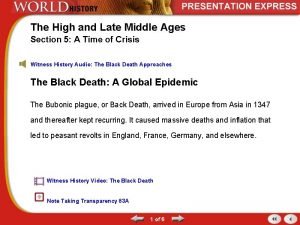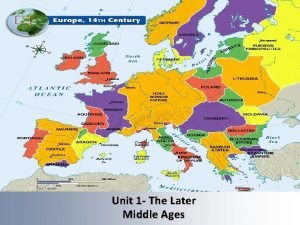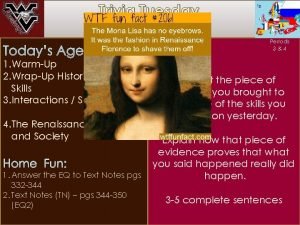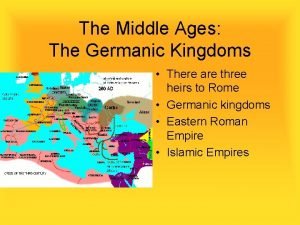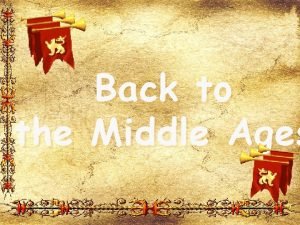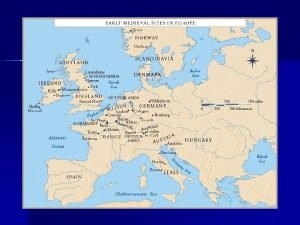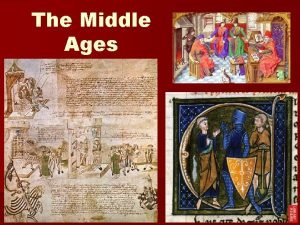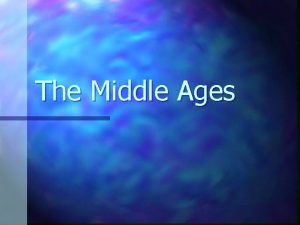Music in the Middle Ages Part 2 Section








- Slides: 8

Music in the Middle Ages Part 2, Section 1 - 9/26/17

General World History ● Spanned from 450 - 1450 ● Began at the fall of the Roman Empire ● Later years had Gothic Cathedrals, towns grew, & universities founded ● Social classes ● ○ Nobility: Castles, knights, hunting, feasting, & tournaments ○ Peasantry: One-room huts, bound to soil & overlords ○ Clergy (Monks): Catholic church, monopoly on learning Hundred Year War, Black Death, River Popes, Crusades Turn to p. 72 in book

Music in Middle Ages ● Cathedrals dominated landscape & mind - center of musical life! ○ Centuries of only sacred music ● Important musicians = Priests OR worked for the church ● Women not allowed to sing in church, but nuns in convents were ○ ● ● Hildegard of Bingen - Abbess, first woman composer Most music was vocal since the church frowned on instruments due to their earlier role in pagan rites ○ Few medieval instruments have survived ○ Organs & bells became common Music manuscripts do not indicate tempo, dynamics or names of instruments to be used ○ Pictures all we have to go on

Gregorian Chant Part 2, Section 2

What is it? ● Melody set to sacred Latin texts & sung without accompaniment ● Offical music of the Roman Catholic church for over 1, 000 years! ● ○ Represents the voice of the church, rather than that of any individual ○ Used to enhance specific parts of religious services Free-flowing rhythm, moves by step within a narrow range of pitches ○ Conveys a calm, otherworldly quality; floating, almost improvisational ● Composers who wrote chant are almost completely unknown ● More modern composers have based original compositions on chant melodies

History & It’s Use ● Named after Pope Gregory I (the Great), reorganized the Catholic liturgy ● Some of it’s practices came from Jewish synagogues (first Christians) of the first centuries after Christ ○ Singing psalms - basis of chant ● Passed along by oral tradition, but notated as the number of chants grew to make sure they were sung uniformly ● Medieval monks spent several hours of each day singing in two types of services… ○ The Office (no, not the TV show): 8 services ○ The Mass: Ritual reenactment of the Last Supper ■ Some texts are same day to day, other texts only for special occasions

Church Modes ● Unfamiliar scales that are used in chant help create the “otherworldly” sound ● Church Modes = modes ● Like other scales, consist of seven different tones & an eighth tone that duplicates the first tone an octave higher ○ Their patterns of whole & half steps are different 1) Ioanian 4) Lydian 2) Dorian 5) Mixolydian 3) Phyrgian 6) Aeolian 7) Locrian

Listenings Title - Alleluia: Vidimus stellam (We Have Seen His Star) Form - ? Title - O successores (You successors) Composer - Hildegard of Bingen



